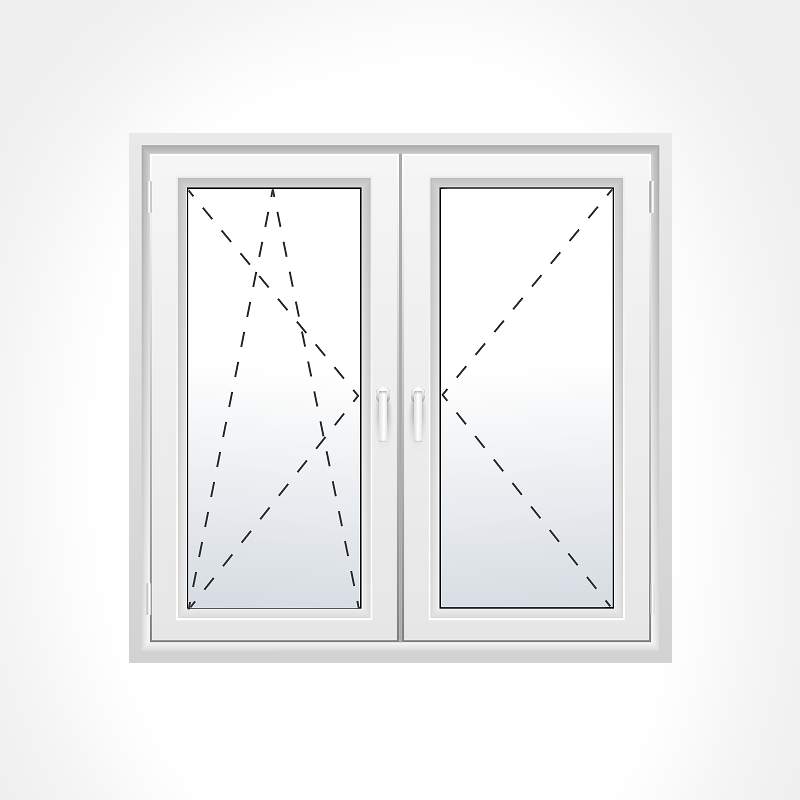Tilt and Turn Windows
The Next Generation of Windows
Tilt and turn windows are known for their simplicity and practicality. They can either swing open like a door or tilt inwards for ventilation with a simple turn of our ergonomic handles. Standard in much of Europe and growing in popularity overseas, tilt and turn functionality allows easy ventilation and continued fresh air without having to leave the entire window wide open. Neuffer's tilt & turn windows use only the finest German hardware available to ensure effortless operation and long term durability. Whether as a replacement for existing casement windows or new construction, tilt and turn windows are the best choice for every modern home.
Tilt Windows
Tilt windows can be tilted only one gap at the top of the frame. The sash is moved around the horizontal axis. The window sash is held in position by integrated hangers. Window opening types such as the tilt-up variant are found primarily in smaller adjoining rooms that benefit from continuous ventilation.
Why Choose Tilt and Turn Windows?
Tilt-and-turn systems are very popular, because they can be installed anywhere and are superior to single hung, double hung and simple casement windows in all regards. Advantages include:
- Dual functionality gives you more opening options
- Easy one-handed operation
- Easy ventilation for more fresh air
- Leave the window open safely without the risk of children falling or leaning out
- Simple cleaning from inside your home
- Energy efficient with modern double and triple glazing
- Secure with lockable handles and multiple locking points
- Great as a fire escape or emergency egress point
- Inswing casement ideal with window screens
Old-fashioned single and double hung windows (also called sash windows) have long been popular in Canada and other English speaking countries. With one or two sashes that move upwards and downwards, they suffer from a variety of problems. In addition to being difficult to clean, their opening mechanism is rough and hardly ergonomic. The tracks on each side often wear out making them even more difficult to open, frequently moving unevenly and weather only makes it worse over time.
Casement windows improve things a bit, being mounted on hinges on each side and swinging open and shut like a door. This allows for quick cleaning, escape in an emergency and larger uninterrupted views. However, they still lack the ability to crack the window and maintain a breeze as with sash windows.
One Handle. Two Possibilities.
Enter tilt and turn. Invented in Germany and long since standard in most of Europe, it combines the best features of both and has none of the disadvantages. By rotating into the horizontal position, the casement swings fully open like a door. Continue rotating it the full 180 degrees and the casement tilts inwards to allow fresh air in.
Types of window opening depending on the type of window
There are many ways in which windows can be opened, regardless of whether they have one or more sashes. There are hardly any restrictions for single-sash windows, provided that the structural conditions allow the respective opening type. Skylights on front doors are usually a fixed-glazed option due to the construction in the door. In the case of windows with multiple sashes, the opening type of the individual sashes can even vary. For example, a combination of tilt sash and turn sash is also possible.
So, apart from fixed glazing, all window sashes by themselves can be turned either to the left or to the right, pushed or tilted inwards or outwards, or swung. Each of the window opening types has its own advantages. It is best to take into account the room for which the window is intended and select the appropriate opening type in our configurator.




